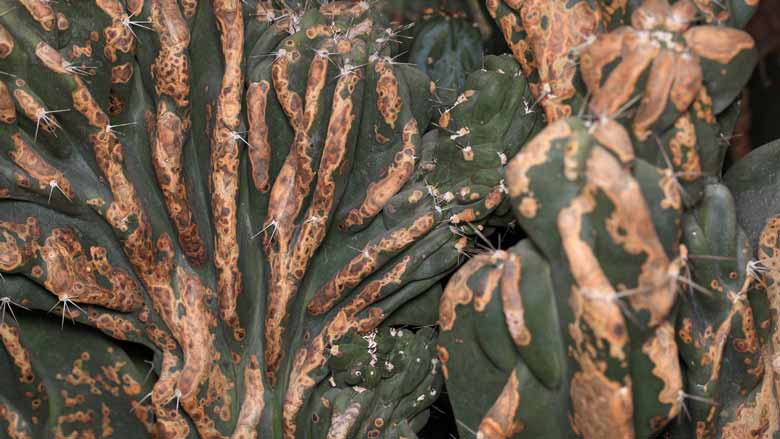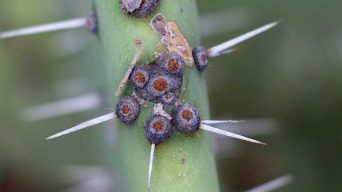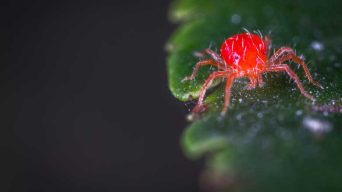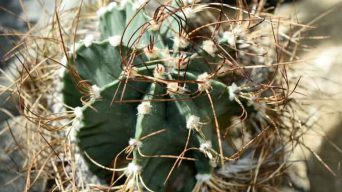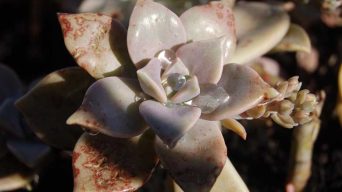If you’ve ever looked at your cactus plants and noticed brown spots, you’re not alone.
These spots can be caused by various things, including watering issues, pests, or a fungal disease.
Brown spots on cactus plants are a common problem, but they can be treated and prevented with a few simple steps.
Here we will discuss the causes of brown spots on cactus plants, how to treat them, and how to prevent them in the first place.
What Causes Brown Spots on Cactus Plants and How To Fix It
Brown spots on cactus plants can be caused by a variety of things, including pests, diseases, and environmental factors.
It’s essential to identify the cause of the brown spots before taking action, as treatment will vary depending on the cause.
The most common causes of brown spots on cactus plants are:
Overwatering
An overwatered cactus can develop brown spots.
This is often caused by giving the cactus too much water or leaving it in a pot that doesn’t have proper drainage.
Succulents and cacti don’t need a lot of water; they should only be watered when the top inch of soil is dry to the touch.
In general, cactus plants need to be watered every two to four weeks.
Also, if your cactus is in a pot with no drainage, the water will pool at the bottom and not be able to evaporate.
This will cause the roots of the cactus to become soggy and rot.
How To Fix It
If your cactus has been overwatered, you’ll need to wait until it dries out before watering it again.
You may also need to repot it in a pot with proper drainage.
If your cactus has developed soft brown spots due to overwatering, you can try to treat it by pruning the affected parts of the plant and then watering it less often.
Prevention
To prevent overwatering, make sure to water your cactus only when the top inch of soil is dry and use a pot with proper drainage.
Water every two to four weeks, depending on the climate and how much rain your cactus receives.
If you live in a hot, dry climate, you may need to water your cactus more often. Conversely, if you live in a humid environment, you may need to water it less often.
Sunburn
Sunburn can also cause brown spots on cactus plants.
Sunburn in cacti commonly occurs when they are exposed to excessive sunlight over an extended duration.
Although cacti need some sunlight to grow, they can sunburn if exposed to too much direct sunlight and heat.
Cacti need about six hours of direct sunlight per day, but you should also provide some shade during the hottest part of the day.
How To Fix It
If your cactus has been sunburned, you’ll need to move it to a shaded area and reduce the amount of direct sunlight it receives.
Place it in a spot that gets indirect sunlight and avoid exposing it to the hot, midday sun.
If the brown spots are severe, you may need to prune the affected parts of the plant and then water it less often.
Prevention
To prevent sunburn, make sure to place your cactus in a spot that gets indirect sunlight and avoid exposing it to the hot, midday sun.
Cacti need about six hours of direct sunlight per day, but you should also provide some shade during the hottest part of the day.
When growing cactus plants indoors, place them near a window that gets indirect sunlight.
If you live in a hot, sunny climate, consider growing your outdoor cactus plants in pots so you can move them to shady areas during the hottest part of the day.
Fertilizer Burn
Cacti can also develop brown spots from fertilizer burn. This is often caused by using too much fertilizer or using the wrong type of fertilizer.
Cactus plants don’t need a lot of fertilizer; they should only be fertilized once every two to four months during the growing season.
Overfertilization can cause the plant’s cells to burst, leading to brown spots.
How To Fix It
If your cactus has fertilizer burn, you’ll need to take measures to help the plant recover.
First, cut back on the amount of fertilizer you’re using.
Second, water the plant more frequently; this will help flush out the excess fertilizer.
Finally, give the plant some time to recover; it may take a few weeks for the brown spots to disappear.
If the cactus is severely damaged, you may need to replant it to help it recover.
Prevention
Cactus plants don’t need a lot of fertilizer; they should only be fertilized once every two to four months during the growing season.
When fertilizing your cactus, use a diluted fertilizer and only apply it to the soil, not the plant.
Root Rot
Root rot is another common problem that can cause brown spots on cactus plants. This is a severe condition that can kill the plant if left untreated.
The most common cause of root rot is overwatering. When the soil stays wet for too long, it creates an ideal environment for bacteria and fungi to grow.
These organisms will invade the plant’s roots, causing them to rot.
How To Fix It
If your cactus has root rot, you’ll need to take measures to help the plant recover.
First, stop watering it and allow the soil to dry out completely. Then, cut away any rotted or damaged roots with a sharp knife.
Next, repot the cactus in fresh soil and water it sparingly until it begins to grow new healthy roots.
Be patient; it can take several months for the rotting cactus to recover fully.
If the cactus is severely infected and the rot has spread to the stem, you’ll need to remove the damaged section and replant the rest of the plant.
Prevention
To prevent root rot, make sure to water your cactus sparingly and never let the soil become soggy.
You can also add some sand or perlite to the soil to help it drain better.
Avoid overwatering by checking the soil regularly and watering only when it’s dry to the touch.
Pests
Cactus plants can also be affected by pests such as scale insects, red spider mites, and aphids.
These tiny creatures can cause the plant to develop brown spots.
Pests cause damage by sucking the sap from the plant’s leaves, leading to tissue damage and the death of the cactus.
How To Fix It
If your cactus has a pest infestation, you’ll need to take action to get rid of them.
The best way to do this is by using a natural pesticide such as Neem oil. Apply the oil to the affected areas and repeat as necessary.
Also, make sure to clean the plant’s leaves regularly to remove any eggs or pests that may be hiding there. You can use a soft brush or a damp cloth to do this.
Prevention
The best way to prevent pests from infesting your cactus is by keeping it clean and healthy.
When you bring a new cactus plant home, quarantine it for a few weeks to make sure it’s not carrying any pests.
Regularly inspect the leaves for any signs of pests and treat them immediately.
Also, keep your plants in a well-lit area and avoid overcrowding them. This will help to discourage pests from taking up residence.
Fungal Infections
Cacti can also develop fungal infections, which can cause brown or black spots on cactus plants.
Fungal infections are most commonly caused by overwatering, but they can also be caused by poor air circulation or high humidity levels.
The fungus will invade the plant’s roots or stems, causing the dying cactus to rot.
How To Fix It
If your cactus plant has fungus, you’ll need to take measures to treat it.
First, stop watering the plant and allow the soil to dry out completely.
Then, remove any infected roots or stems with a sharp knife and dispose of them in the trash. Next, treat the plant with a fungicide.
Finally, repot the cactus in fresh soil and water it sparingly until it begins to grow new roots.
Once the plant is healthy again, you can start watering it normally.
Prevention
To prevent fungal infections, make sure to water your cactus correctly and provide good air circulation.
Never overwater your cactus, and keep the soil dry between waterings.
Also, avoid placing your cactus in high humidity environments.
When you bring your cactus indoors for the winter, make sure to place it in a dry, well-ventilated room.
Cactus Corking
Cactus corking is a common problem that can cause brown spots on cactus plants.
It is natural for cactus plants to produce a layer of protective cork on their stems as they grow.
This protects cacti from permanent damage caused by breakage as they grow bigger.
Cactus corking occurs as a consequence of the plant’s natural aging process.
It generally begins at the bottom of the plant and works its way up; occasionally, however, corking can be observed higher up on the cactus.
It’s important to note that cactus corking is not a disease and does not typically harm the plant.
How To Fix It
In most cases, there is no need to take any action, as cactus corking is a natural process that does not harm the plant.
However, if the cactus is in a pot and you want to keep it from growing too large, you can cut off the corked areas with a sharp knife.
Prevention
There is no known way to prevent cactus corking, as it is a natural process that occurs as the plant ages.
However, if you are concerned about the appearance of cactus corking, you can monitor your plant and cut off any corked areas as they appear.
Frost Damage
Frost damage is a common problem that can cause brown spots on cactus plants.
It occurs when the plant is exposed to freezing temperatures, which can damage the cells and cause them to die.
When the cells die, they turn brown, and the plant will start to rot.
How To Fix It
If your cactus plant has been damaged by frost, you must remove the dead tissue.
Use a sharp knife or scissors to cut away the brown tissue until you reach healthy green tissue.
If a large portion of the plant has been damaged, you may need to replant it.
Be sure to use a potting mix designed explicitly for cactus plants and water thoroughly.
Prevention
The best way to prevent frost damage is to protect your cactus plants from the cold.
Move them indoors when the temperature drops below freezing, or use a protective cover like a blanket or sheet.
Provide a warm environment for them, such as a sunny windowsill.
Avoid placing them near drafty areas, such as doors and windows.
Final Thoughts
Brown spots on cactus plants can be caused by a variety of things, from fungal infections to pests.
However, most of the time, they are simply due to overwatering or sunburn.
Fortunately, there are several easy ways to treat and prevent brown spots on cactus plants.
When you provide proper care for your cactus plants, they will be less likely to develop these unsightly blemishes.
By following these tips, you can keep your cactus healthy and looking its best.

